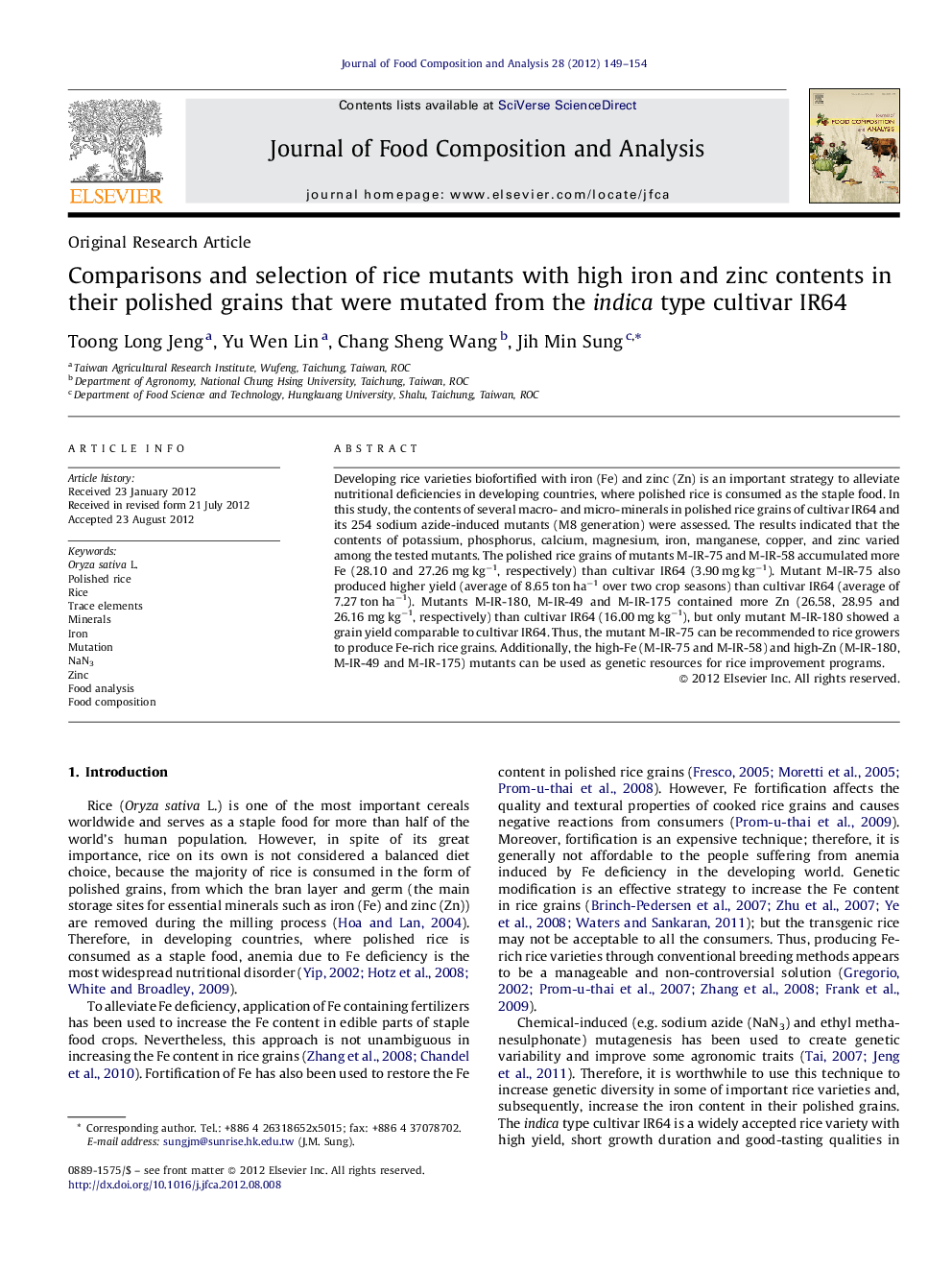| Article ID | Journal | Published Year | Pages | File Type |
|---|---|---|---|---|
| 1218430 | Journal of Food Composition and Analysis | 2012 | 6 Pages |
Developing rice varieties biofortified with iron (Fe) and zinc (Zn) is an important strategy to alleviate nutritional deficiencies in developing countries, where polished rice is consumed as the staple food. In this study, the contents of several macro- and micro-minerals in polished rice grains of cultivar IR64 and its 254 sodium azide-induced mutants (M8 generation) were assessed. The results indicated that the contents of potassium, phosphorus, calcium, magnesium, iron, manganese, copper, and zinc varied among the tested mutants. The polished rice grains of mutants M-IR-75 and M-IR-58 accumulated more Fe (28.10 and 27.26 mg kg−1, respectively) than cultivar IR64 (3.90 mg kg−1). Mutant M-IR-75 also produced higher yield (average of 8.65 ton ha−1 over two crop seasons) than cultivar IR64 (average of 7.27 ton ha−1). Mutants M-IR-180, M-IR-49 and M-IR-175 contained more Zn (26.58, 28.95 and 26.16 mg kg−1, respectively) than cultivar IR64 (16.00 mg kg−1), but only mutant M-IR-180 showed a grain yield comparable to cultivar IR64. Thus, the mutant M-IR-75 can be recommended to rice growers to produce Fe-rich rice grains. Additionally, the high-Fe (M-IR-75 and M-IR-58) and high-Zn (M-IR-180, M-IR-49 and M-IR-175) mutants can be used as genetic resources for rice improvement programs.
► Developing Fe-biofortified rice through conventional breeding is important. ► We examine the Fe content in polished rice grain of 254 mutants derived from IR64. ► Mutant M-IR-75 contains high Fe content and produces greater yield than IR64.
